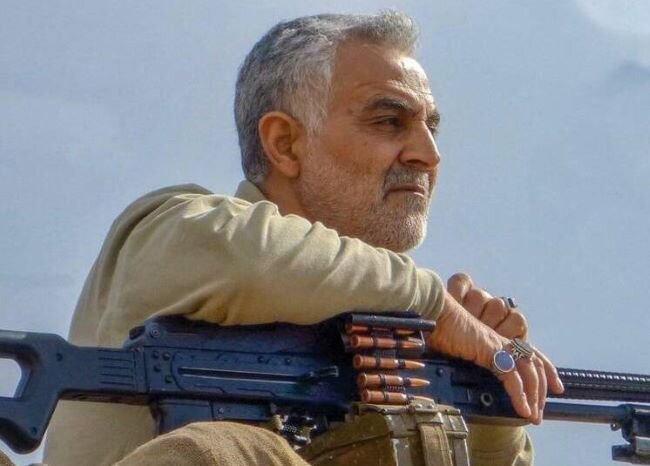Architect
How Gen. Soleimani designed a new regional geometry

TEHRAN - Since the early 2000s, the United States has poured trillions of dollars and deployed thousands of troops into West Asia, all in pursuit of its grand vision for a "new Middle East." This vision, also referred to as the "great Middle East," envisions a tightly integrated regional security architecture, comprising "democratic" nations aligned with the United States.
While a few countries, such as the UAE and Saudi Arabia, appeared to fit the "vibrant democracy" model Washington sought, a significant number of states in West Asia were deemed in need of substantial transformation.
To bring this ambitious plan to fruition, Washington initiated a series of invasions and lent support to insurgencies in countries perceived as disagreeable. It directly engaged in military interventions in Afghanistan and Iraq, while stoking the flames of terrorism and chaos in Syria and Libya. Nations that proved resistant to direct confrontation or were not susceptible to destabilization were met with punishing economic sanctions, akin to the measures imposed on Iran.
In its endeavor to reshape the entire West Asia, the U.S. needed to eliminate any groups or movements seeking to challenge Washington's dominance. Over time, various forces emerged in the region, launching attacks against American positions in a bid to expel U.S. troops from their respective nations. These fighters posed an increasingly significant threat to American interests, especially when a military leader succeeded in uniting and coordinating them more closely. Iranian General Qassem Soleimani swiftly became a target for the U.S. after revitalizing the fragmented resistance across the region. Fighters in Palestine, Lebanon, Syria, Iraq, and Yemen began to leverage the commander's expertise, utilizing his guidance to reorganize into steadfast bulwarks standing against the U.S. and its allies, who sought to exploit their lands, wealth, and resources.
That’s why when in January of 2020, Washington decided to assassinate the general, it struggled to justify the act based on international law. The U.S. assassinated General Soleimani on Iraqi soil, while he was there for a diplomatic mission. It did it in cold blood and did not think twice about violating the laws it so vehemently bloviates, as it believes itself and its allies to be above every law and moral standard.
With the elimination of the biggest supporter of resistance forces, the U.S. saw a big opportunity to initiate the final phases of its transition toward the "new Middle East". The biggest issue of the Muslim world, the Palestinian cause, now needed to be addressed. As apart from resistance groups, Arab states in the region had shown little to no regard towards the Palestinian issue, the U.S. began its efforts to sideline Palestinians through the Abraham Accords. The UAE and Bahrain gladly embraced the deal and normalized their relations with Israel, while Saudi Arabia awaited its turn, feeling compelled to temper its overt alignment with Tel Aviv due to its custodianship of Islam's most sacred sites.
However, as a normalization agreement with Riyadh appeared imminent, Palestinians returned to the center of attention. A successful operation conducted by the Hamas resistance movement on October 7 dealt a heavy blow to the Israeli regime and sent shockwaves across Western political circles, which had presumed the resistance weakened following the assassination of General Soleimani. And as Israel embarked on an unrelenting bombing campaign against the Gaza Strip, other resistance groups such as Yemen's Ansarullah and Lebanon's Hezbollah swiftly came to the aid of the Palestinians.
The U.S. now watches in awe as resistance once again gains regional and even international prominence. Washington and Israel find themselves struggling to give a meaningful military response to resistance forces’ attacks, as they continue to lose popularity among the masses. General Soleimani is in a fight to the finish. Even though he is not here today, his architecture for peace and security in West Asia is not going anywhere.
Leave a Comment